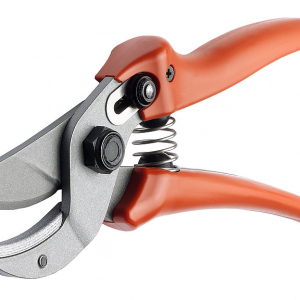A herb for all seasons
With the ever-increasing demand for food to be labelled with the origin of the supply, one sure method of knowing where it is grown is to grow your own.
A great way of doing this, with the bonus of trying new and exciting taste sensations, is to use the amazing number of herbs that can be grown easily in our own backyards.
Herbs are tolerant of a wide range of growing conditions and they grow well with very little maintenance. However, for the best results it is best to categorise them into four groups. If you follow the growing hints for each group, your herbs should be healthy, flavoursome and fragrant.
Initially though, the preparation of the site is most important with a light, well-drained soil and generally in full sun. Some herbs prefer a light shade.
Before planting, dig the soil to about 25cm deep. If the soil lacks any decent humus it is a good idea to add some well-rotted cow or chicken manure and either some blood and bone or a complete fertiliser. You can also add some garden lime at the rate of half a cup per square metre. Fork all this together and probably let it rest for a week to ten days.
Getting back to the four categories of herbs, they are:
- Mediterranean Herbs
- High Summer Moisture Requirers
- Vegetable Culture Herbs, and
- those that will Suit Most Conditions.
The Mediterranean group includes thymes, sages, lavender, marjoram, rosemary, french tarragon, lemon verbena and several others. These herbs will handle fairly low soil fertility and higher lime or alkaline soils. They require very good drainage hence lower water requirements.
The next category, High Summer Moisture Requirers, includes the mints, water cress, lemon balm, lemon grass, sorrel, cardamom and also several others. these herbs prefer a soil with high nutrient and will not perform well if allowed to dry out. Saying that though, the soil must be well drained and not water-logged—apart from the mints that will perform in wet conditions.
Thirdly, the Vegetable Culture Herbs include basil, chives, parsley, rocket, coriander, dill, fennel and several others. These herbs again like high soil nutrition with the focus being on high nitrogen rates. They also prefer good summer moisture.
The last group are the Suit Most Conditions herbs. These include borage, feverfew, tansy, winter tarragon and aloe vera, to name a few. These will handle the conditions of all the above.
Therefore, when planning your herb garden it is important to divide your garden into the four categories mentioned. This will make it much easier to maintain and ensure that each herb gets the best conditions for healthy growth. A variety of foliage types within each group will also make the garden visibly more appealing.
Other factors to consider in the location of the garden:
- Have it close to the kitchen so quick access is available.
- Use it regularly so fresh material is always coming on.
- Replace plants like parsley every two years as they often can go to seed.
Herbs come in perennial and annual forms with the perennial types usually dying down over winter. As these die back give them a cut back, and in early spring spread a handful of complete fertiliser around them with a few handfuls of composted cow manure. This will get them off to a good start. Annual forms will require replacement every year.
For those of you who have difficulty in providing a plot for your herbs, remember that they do very well in containers. Just follow the guidelines above and keep like requiring plants together in the same container. Mints can become invasive and are best grown in a pot under the backyard tap. Remember, always use a premium potting mix in the potting process and regularly feed with a seaweed/fish emulsion fertiliser.
Happy herbing,



